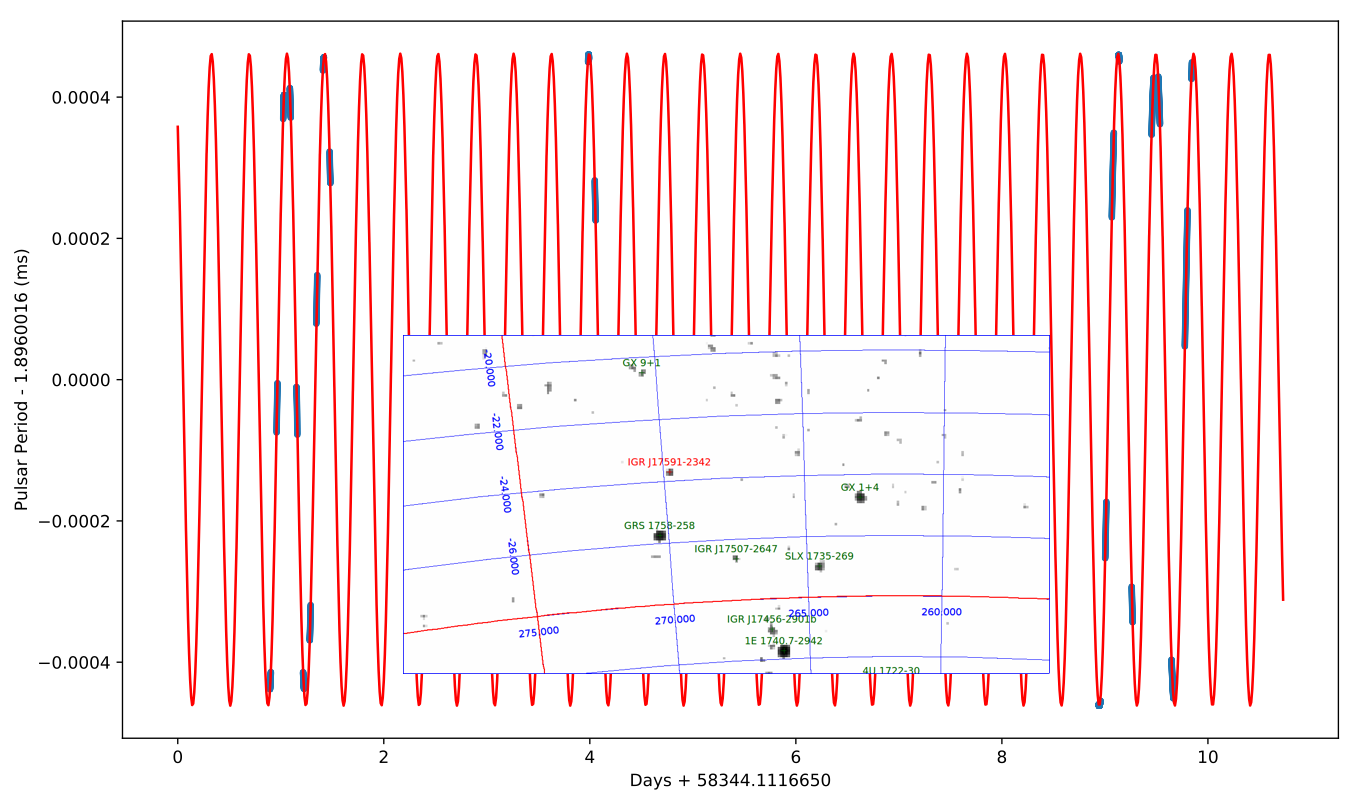NICER / ISS Science Nugget for August 30, 2018NICER and NuSTAR jointly discover that IGR J17591-2342 is in a binary systemOn August 12th, scientists monitoring the Galactic Center region using the European INTEGRAL satellite reported a new transient X-ray source, which they dubbed IGR J17591-2342. Later the same day, NASA's Swift satellite observed the source and obtained precise sky coordinates with its X-ray Telescope. NICER reacted quickly to the news of the new source and began observing, as did NASA's NuSTAR, a focusing high-energy X-ray telescope. Using NICER and NuSTAR independently, an international team of researchers discovered that the source was an accreting pulsar, a neutron star emitting beamed X-rays generated by accreted matter drawn from a companion star. The X-ray emission was found to be pulsing in brightness 527 times per second, revealing the spin rate of the neutron star. Both instruments also observed tiny variations of this 1.9 millisecond spin period – Doppler shifts in the pulsed signal indicating that the pulsar is in an 8.8-hour orbit with a companion of mass approximately half that of our Sun.
The two missions jointly reported their discovery on August 16th (ATel #11957). The uniquely precise timing capability of NICER was critical to pinning down the binary orbit and the rate at which the pulsar is being spun up by the accreting matter. This represents the 22nd accreting millisecond pulsar to be discovered and enriches the census of these key objects for understanding the late stages of stellar evolution. The results of this productive multi-mission study will be submitted, in a paper led by Dr. Andrea Sanna of the University of Cagliari (Italy), to the journal Astronomy & Astrophysics Letters later this week. NICER
|



